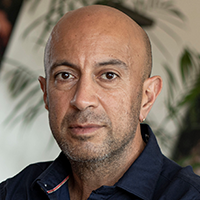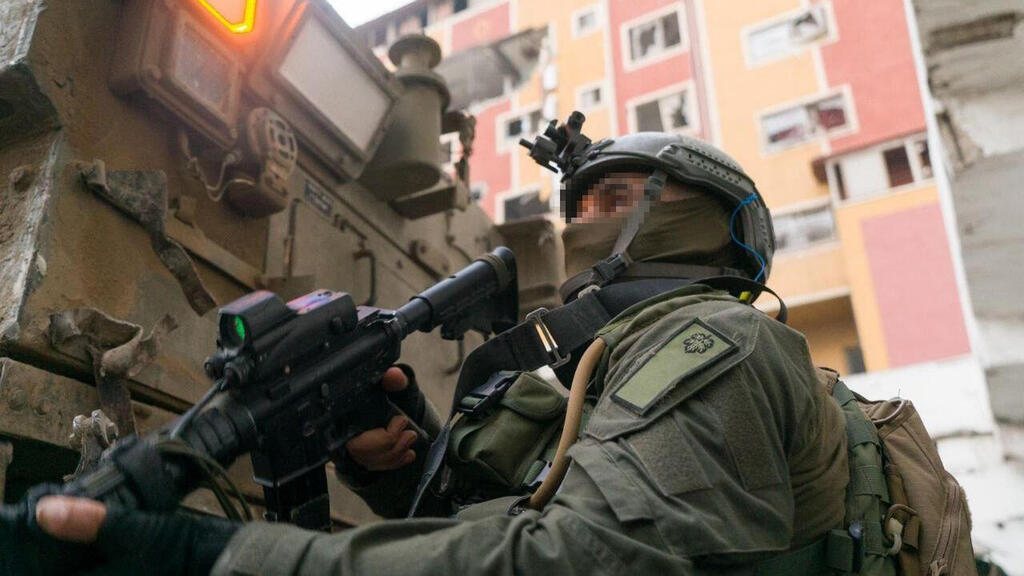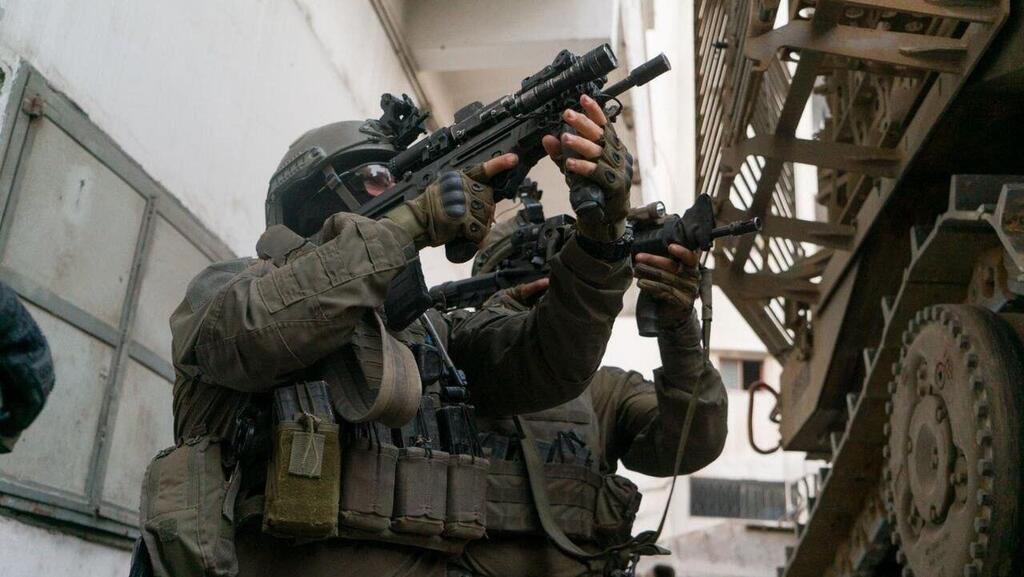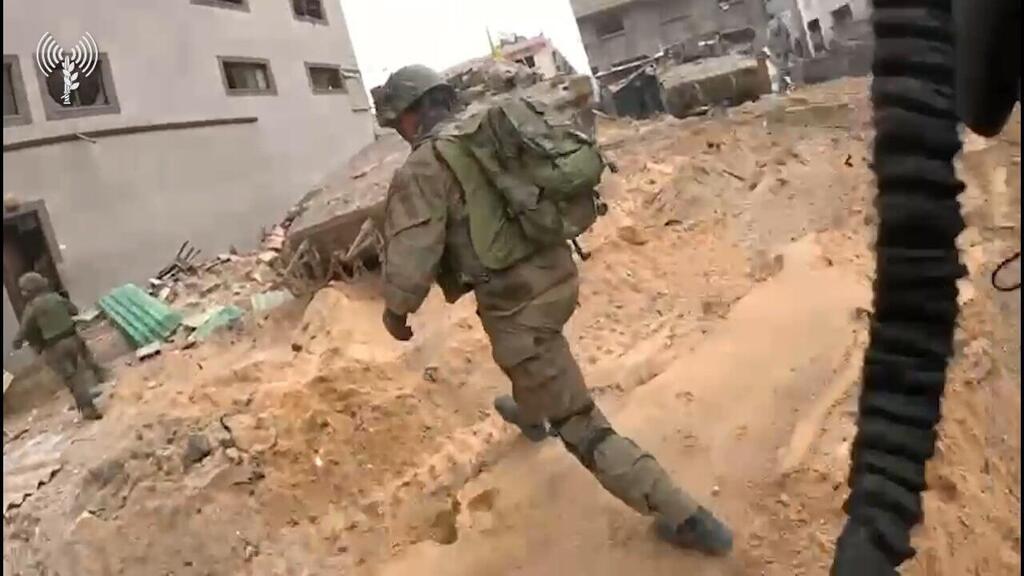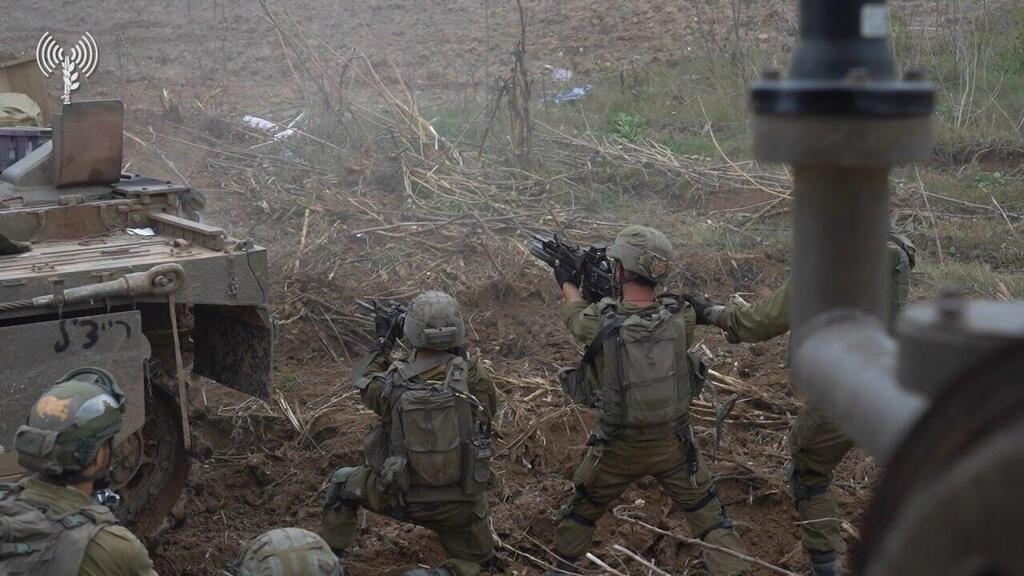10:40 on a Friday morning. We ascend the hills, cross the border, and enter the outskirts of Shijaiyah. Two stray dogs greet us. After a bit of caution, we continue deeper towards the first houses. It's been 16 years since I was last here. I used to visit this neighborhood frequently until the security apparatus decided that allowing Israeli journalists into the Gaza Strip was no longer safe.
Read more:
This neighborhood is hardly as recognizable as I remembered it. Firstly, the many years since 2007 have naturally added numerous homes and streets to Shijaiyah. But above all, it's the aggressive attacks by the IDF on the neighborhood that have changed its surface. It's no longer a residential neighborhood; it's a town in ruins. Rows of Russian-style homes stand abandoned, devoid of inhabitants. The remaining houses are unfit for human habitation; others are partially demolished, and some still witness intense fighting.
Shijaiyah in December 2023 resembles scenes from World War II action movies: an abandoned town turned into a battlefield, with infantry forces and armored vehicles navigating between the ruined buildings, trying to locate the dangerous enemy hiding among the hundreds of structures, especially underneath the rubble.
Our host is Lieutenant Colonel Yaniv Barot of the Kfir Brigade, a 42-year-old resident of Tel Aviv. He is a former paratrooper, currently leading a brigade that initially operated in the Reim and the Nova Music Festival areas. Later, they engaged in intensive operations in Jenin, Tulkarm, and more, and now oversee the battle for the notorious neighborhood.
Barot's soldiers have been managing a determined and tenacious four-day battle against an enemy who avoids facing them directly but primarily aims to harm them or, in the local vernacular, 'tail them.' In the last four days alone, the soldiers have discovered 30 tunnel entrances, indicating the extent of the activity beneath Shijaiyah.
At 10:45, we already spot the large menorah erected on one of the buildings in the area. The fighters pause, and we meet Barot's soldiers. What stands out here more than anything is the stark contrast between the atmosphere of vulnerability in the rear, where the threat to life is much lower, and the motivation and sense of duty prevailing here on the frontlines, where constant combat is the backdrop. It's almost bewildering.
Seconds after our arrival, we hear in the communication: "We had an encounter, confirmed terrorist kill. We also confirmed the kill with a grenade; he is dead." Colonel Kfir responds: "There must be more terrorists nearby, work slowly, methodically, considerately.' These are indeed the keywords in the operation unfolding here, and it seems also in other places in Gaza.
The IDF's combat is conducted here in an orderly, systematic, and organized manner. There are no wild actions, no irresponsible outbreaks. Here, there is a successful and focused military operation.
The soldiers under Barot's command advance, clearing house after house. They operate within a command framework involving dozens of officers who planned the operation and gathered all possible intelligence, and now the machinery moves slowly, street after street, alley after alley, to cleanse the neighborhood of Hamas. It's a slow but steady progress, occasionally under fire but backed by a comprehensive system of artillery, air force, intelligence, and more.
At 11:05, we move towards the forward positions of the Kfir Brigade soldiers, located in an abandoned facility that previously aided Hamas in manufacturing rockets. The soldiers are spread out, attempting to scan the houses in front of them. In one corner of a house, we notice Omer Ohev Tzion, a paramedic from Beit Nehemiah, who was supposed to be discharged from the army just a month ago but remained due to the war. Her partner from the brigade is not far away. "He watches over me," she explains. Barot notes that the number of women operating under his command in Gaza is exceptional compared to previous operations he has witnessed.
At 11:30, we begin to move on foot through the devastated neighborhood. In the background, the sounds of explosions and gunfire are well audible, a result of tank shellings or attacks by unmanned aerial vehicles. We reach a border-crossing street, where on the other side, a building just opened fire towards the forces. The soldiers prepare to launch a missile from a Matador towards the building after a tank has already fired a missile towards it. Again, everything is conducted with caution and determination. The two soldiers position themselves closer to the suspicious building and launch the missile. The bottom floor is hit. It's still unclear what the fate of the terrorists is.
In one of the houses on the street, a tunnel was discovered just three hours ago. The soldiers thoroughly searched the building, and one of them felt something unusual under the rug in the living room. They removed the rug and found an entrance leading to a deep, well-constructed tunnel with electrical cables running deep into the ground. Meanwhile, until the tunnel is cleared two soldiers are assigned to guard the entrance while others advance north.
At 12:25, a report of casualties comes through the communication. "We took an RPG hit, there are injured." Several soldiers suffered minor injuries. It is decided that a medical team from Israel will be directed to treat the soldiers, who endure shrapnel wounds to their faces. This is essentially the same tactic employed by Hamas's Shijaiyah Brigade, even after its commander was eliminated.
The terrorists did not abandon the battle or flee, as seen in other places in Gaza; instead, they are currently conducting guerrilla warfare. They peek out from the tunnels from time to time, attempting to cause as many casualties as possible on the Israeli side. This type of combat results in casualties on the Israeli side and a relatively slow pace of action. But in the end, every encounter between the soldiers and Hamas terrorists ends decisively. The army was tasked with clearing Gaza of Hamas, and it is now doing so "with caution and determination," as stated.
The sight of Shijaiyah lays bare. The residents of this neighborhood no longer have homes to return to. On the Israeli side, some may hope that the immense destruction will lead to Hamas's surrender. It's unlikely to happen, probably not anytime soon. In the meantime, it can be speculated that the fighting in the neighborhood will end in the coming days, as well as in Jabaliya and perhaps a few weeks later in Khan Younis. Then the troubles of Israel and Hamas will begin. The significant issue is what will happen after Khan Younis (and after the war), and here the diplomatic stage lags behind the military one. While the latter is already examining various options for the day after that will help Israel achieve its military objectives, Netanyahu's government seems cautious, perhaps for political reasons.
The Israeli public may want swift victories without casualties, but the battlefield demands slow and careful action to save as many lives as possible. There is a complex cost involved. The army can almost at any given moment rush into the heart of Shijaiyah and report that it has conquered the neighborhood, but this territory will remain with many terrorist cells and functioning tunnels. And if the Israeli public and government decide that they want to eliminate Hamas's rule and its military wing, this seems to be the only way to do it. In this sense, the IDF is winning, but it takes time. Now, the task of the diplomatic stage, led by Prime Minister Benjamin Netanyahu, will be to buy time for the IDF. However, Netanyahu's attempt to bury his head in the sand the day after does not seem to assist Israel in gaining a larger time window from the United States. On the contrary, it seems to hinder it.
At 13:00, we are already moving outside of Shijaiyah. Lt. Col. Ynon Gadsy, 31, from Ramat Gan, is leading us now and seats me on the usually reserved seat for the machine gunner, this time without the machine gun. The dogs come to greet us again, this time to bid us farewell on our way back to Israel. "What a fauda," Gadsy tells me. "Write: 'The Fauda of Shijaiyah.'"



